Evaluation of bench terracing model parameters transferability for runoff and sediment yield on catchment modelling

Authors:
Knowledge about the effectiveness of Soil and Water Conservation (SWC) interventions is a key for sustainable watershed management. Various modeling tools support the SWC assessment. However, setting the parameters for SWC works remains challenging due in part to different environmental and scale constraints as well as lack of monitoring information. This research tests the transferability of a Bench Terrace Parameter-Set (BTPS) obtained, through the Soil and Water Assessment Tool (SWAT) model, for the experimental site of the terraced agricultural catchment (Sbaihia) to the receiver El-Gouazine catchment based on model performance assessment. This was facilitated by daily river discharge and multi-annual sedimentation records obtained at El-Gouazine hill-lake for both prior and post Bench Terrace (BT) implementation periods. Prior to the terracing (1994–1996) period, the calibration of the SWAT model using SUFI2 algorithm was implemented to the optimal model parameter set for El-Gouazine catchment achieving a Nash Sutcilffe Efficiency (NSE) of 0.57 for daily runoff. The BT parameters introduced to the SWAT model to simulate the catchment dynamics for the post terracing (1998–2002) period indicated a negative NSE, which emphasizes the distinct hydrological change through BTs. The consideration of the BTPS obtained for the Sbaihia catchment increased the daily based NSE to 0.50 for the specific period from 1998 to 2002. Results indicate the potential of BT parameter transfer between catchment using SWAT model as a viable option for other related studies of surface runoff and sediment yield based on descriptive parameters related to Curve Number (CN) and Modified Universal Soil Loss Equation (MUSLE) methods. The BTPS can support setups of watershed models in similar environments and SWC context – thus, to eventually support sustainable watershed planning and management in data-scarce semi-arid areas.
